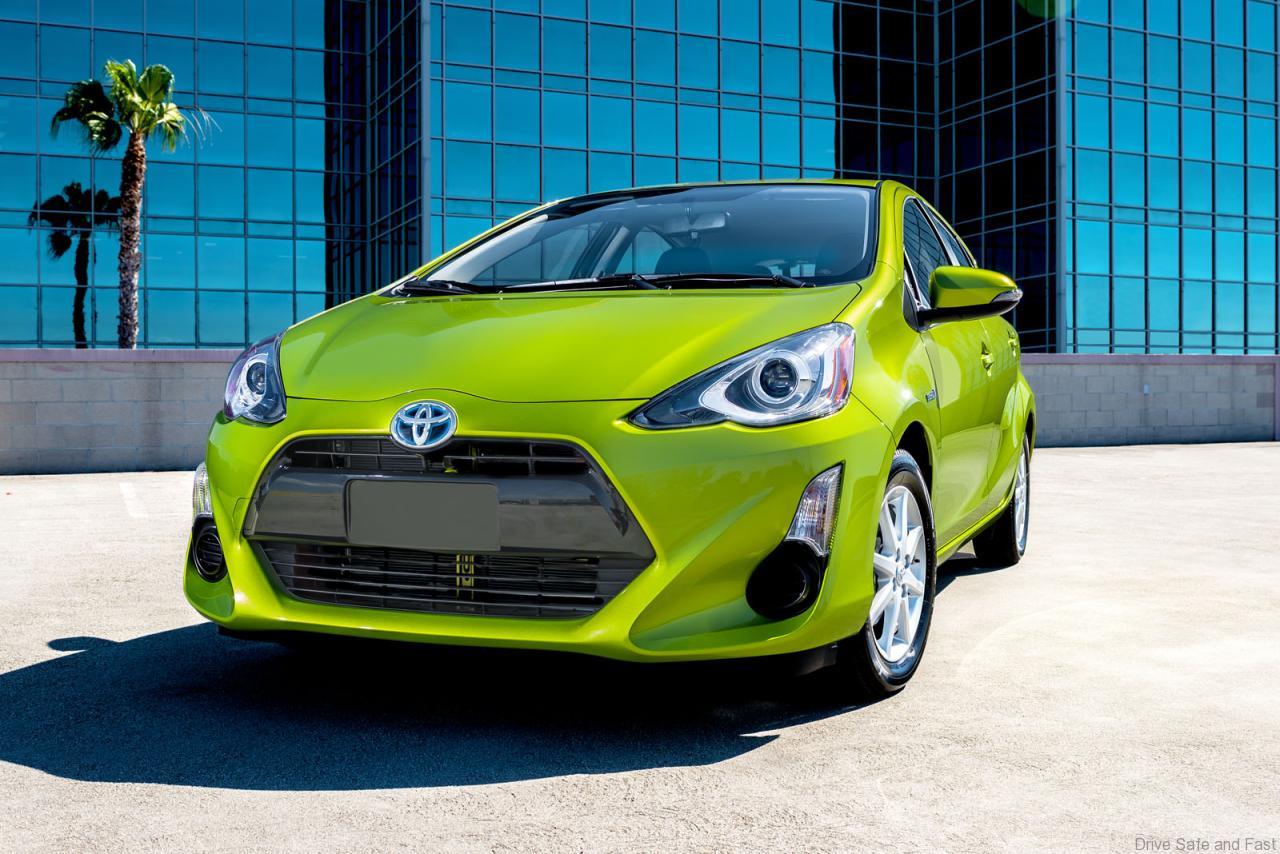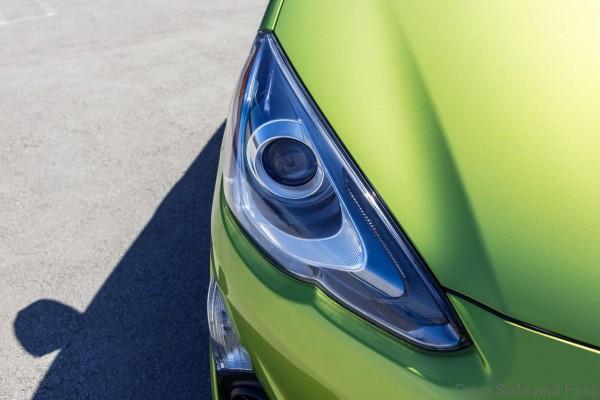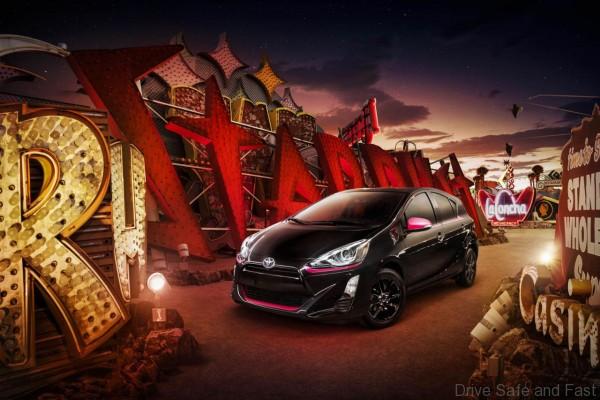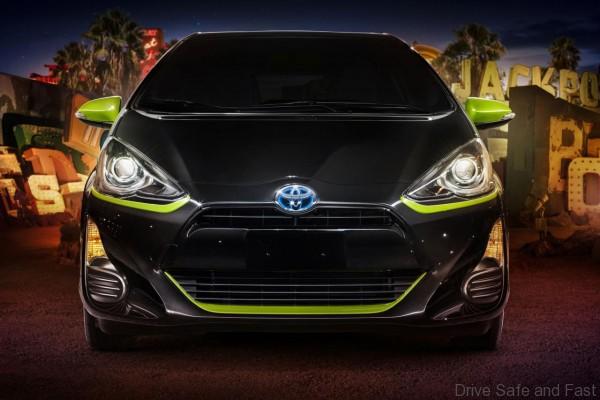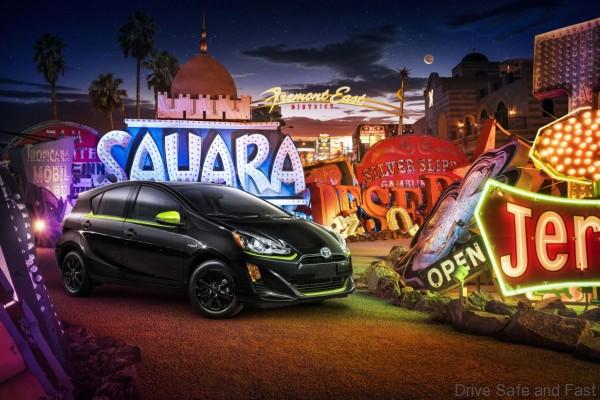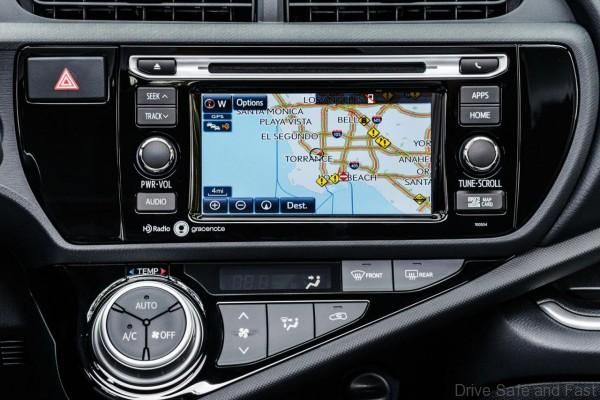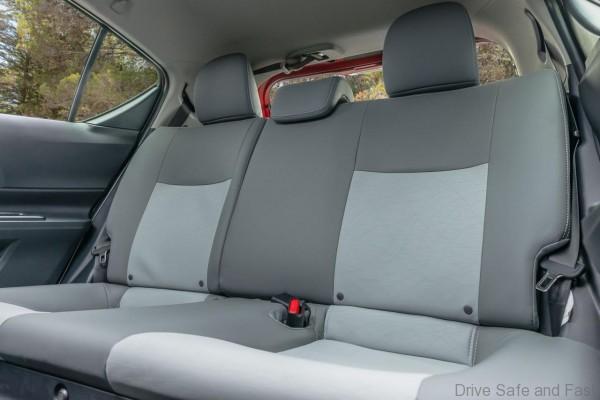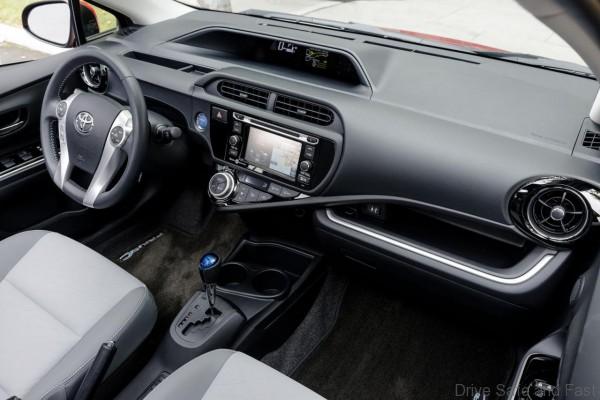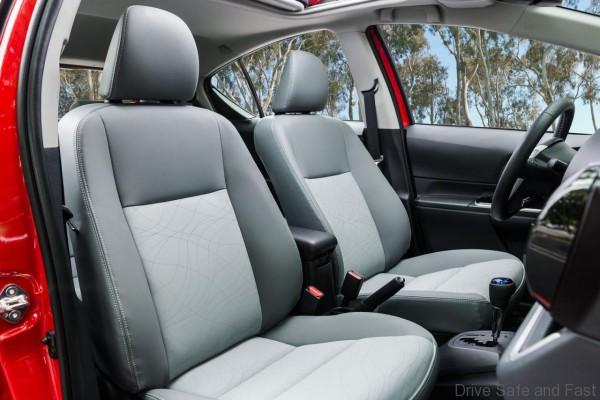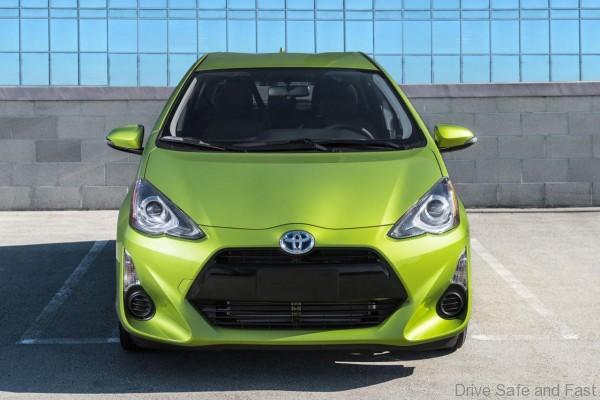The 2016 Toyota Prius c may be the smallest of the brand’s eight hybrid models, but the new-for-2016 Toyota Safety Sense-C system gives it a big advantage over other small cars. And no other car in the compact segment can touch its remarkable 53-MPG EPA-estimated city fuel economy, making Prius c big on eco and fun. A new Persona Series Special Edition combines eye-grabbing color combos and other upgrades.
Toyota gave the Prius c a major styling and interior upgrade for 2015, and so the big news for 2016 is the available Toyota Safety Sense C (TSS-C), which equips the car with an array of driver-assist technologies: Pre-Collision System, Lane Departure Assist, and Automatic High Beams.
Toyota is giving the Prius c an infusion of playfulness for 2016, too, with the Persona Series Special Edition. This distinctive model goes on sale in December and is limited to just 1,500 units. The Persona Series Special Edition comes exclusively in Black, with a choice of two unique color accents that amp up the fun: Electric Lime and Cherry Pearl.
The contrast color accents can be found on the lower front grille trim, beneath the headlights and on trim beneath the side windows. The accents also cover the outside power mirrors and interior rear-view mirror shell. You may have seen such paint schemes on customized exotics driven by pro ballplayers, but the effect costs far less on a 2016 Prius c Special Edition, which also includes 15-inch black alloy wheels and a custom “Persona Series” badge.
The Prius c is offered in four numbered grades, and the Special Edition is built on the Two. That means it’s equipped with extras including fabric-trimmed two-tone seats; 6-way adjustable driver’s seat; 60/40 split fold-down rear seats; cruise control, a cargo area cover and engine immobilizer.
Toyota remains the world’s hybrid leader in terms of both models offered and total sales. Since the first generation Prius in 1997 (2000 in the United States), about four million Prius vehicles have been sold worldwide. Prius remains the world’s premier eco-vehicle brand, and has also been instrumental in establishing consumer trust in hybrid technology.
Urban dwellers like the packaging of the Prius c, which at 157.3 inches long must be one of the easiest-to-park cars on the market. So it’s no wonder that c stands for city. And what could be more appropriate than bright lights in the big city? The Prius c shines the way with standard single LED projector low- and high-beam headlights and LED tail and brake lights. Colors like Electric Lime Metallic, Sun Fusion, Tangerine Splash Pearl and Sparkling Sea Metallic sound tasty enough to drink, and they ensure a glowing appearance in daylight, too.
The Prius c’s clever design strategically locates key drivetrain components to maximize cabin space. The compact gasoline engine, transaxle and power-control unit are optimally placed within the vehicle to help enhance weight distribution and lower the center of gravity. The hybrid battery and fuel tank are positioned beneath the rear seat, ideally distributing their masses within the car’s wheelbase to improve weight distribution and, therefore, handling agility.
As a result, the Prius c offers 104 cu. ft. of total interior volume (87.4 cu. ft. passenger volume plus 17.1 cu. ft. cargo volume). The 35-inch rear legroom rivals some larger compacts.
In adapting Toyota’s hybrid technology to the Prius c platform, each of the system’s major components benefitted from a design focus to reduce weight, and size while improving efficiency. Toyota’s hybrid technology integrates a gasoline engine, an electric motor within a Continuously Variable Transaxle, a nickel-metal hydride battery, a power control unit (inverter), a DC-DC converter, a step-up converter and a hybrid control computer. The hybrid control computer governs the seamless application of gasoline engine and electric power depending on driving demands and selected drive mode.
The Prius c’s SULEV (Tier 2 Bin 3)-rated 1.5-liter inline four-cylinder gasoline engine utilizes an Atkinson cycle to increase efficiency. The engine produces 73 horsepower and 82 lb.-ft. of torque, contributing to a total hybrid system output of 99 hp. Prius c offers three distinct drive modes: Normal, ECO, and EV Mode. ECO reduces overall energy consumption by governing climate control and throttle operation to improve vehicle efficiency. Under certain conditions EV Mode allows the Prius c to be driven solely by electric power for under one mile while remaining below 25 mph.
The Prius c’s body structure makes extensive use of lightweight, high-strength steel to help reduce vehicle mass and enhance fuel economy. The strategic use of high-tensile-strength steel contributes to the vehicle’s ability to absorb and disperse impact energies, helping enhance occupant safety. The high level of torsional rigidity afforded by the Prius c body structure allows the suspension to be more optimally tuned for ride and handling.
The body covering that structure slips through the air with a low 0.28 coefficient of drag, the result of extensive aerodynamic features. The Prius c’s lower-body styling is wider below the beltline, featuring sculpted rear flares that express an athletic stance. The cabin combines futuristic design elements in a passenger-friendly environment, and premium touches include piano black, chrome and soft-touch upgraded interior accents on the Prius c Two and above.
The Prius c rides on standard 15-inch wheels — steel with wheel covers for the One or in aluminum alloy for higher trim levels. A 16-inch aluminum alloy wheel option with P195/50R16 tires is available for the Prius c Four.
In addition to TSS-C, the Prius c is equipped with nine airbags strategically located to help protect the driver and passengers in the event of severe collisions. Like all 2016 Toyota models, the Prius c is equipped with the standard Star Safety System™, which includes Vehicle Stability Control (VSC), Traction Control (TRAC), Anti-lock Brake System (ABS), Electronic Brake Force Distribution (EBD), Brake Assist (BA), and Smart Stop technologies.

